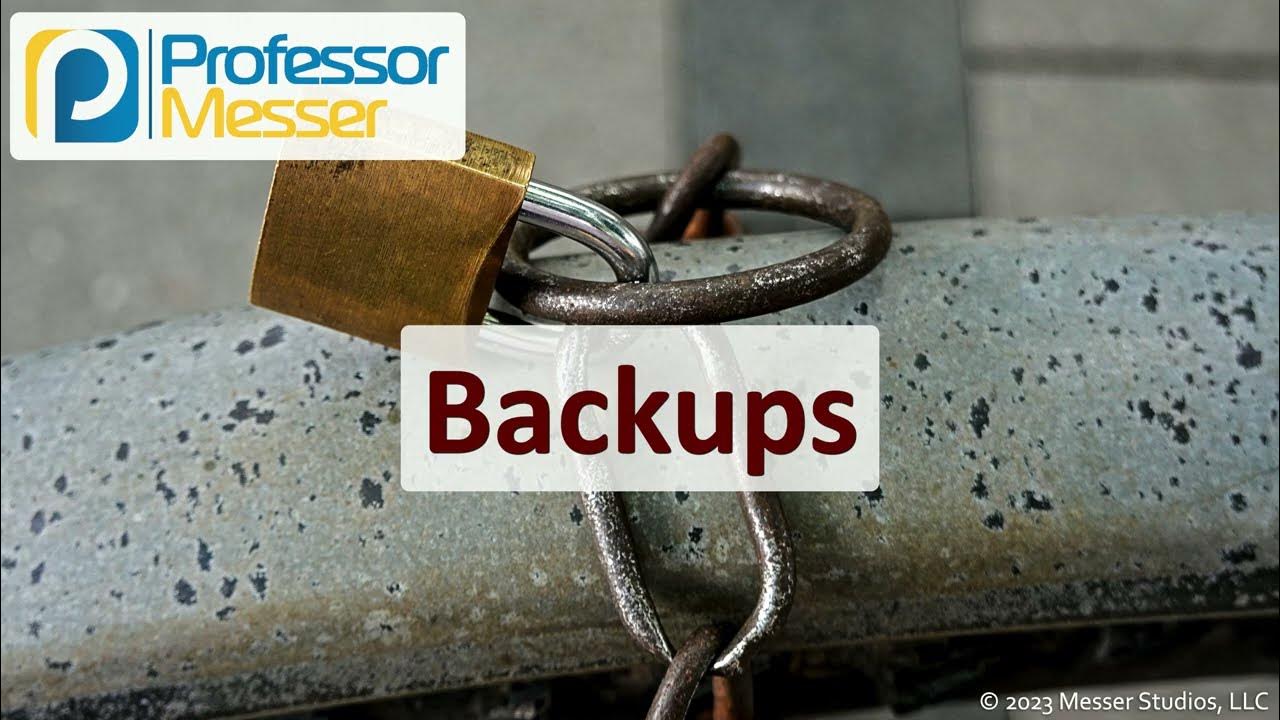Backup and Recovery Strategies for Linux Systems - Riya Bansal, Microsoft
Summary
TLDRThis video covers the importance of data backup and recovery, with a focus on two open-source tools: Bacula and Amanda. Bacula offers high configurability with role-based access, making it ideal for complex backup scenarios, while Amanda uses a client-server model with tape-spanning techniques, optimizing system resources. Best practices for backup management, such as regular testing, secure storage, and monitoring, are emphasized, alongside common pitfalls like relying on a single backup method and inadequate testing. The speaker stresses the need for comprehensive disaster recovery planning and the use of multiple backup techniques to ensure data safety.
Takeaways
- 😀 Bacula is a highly configurable backup software that provides flexible options for defining backup schedules, retention policies, and roles.
- 😀 Amanda is an open-source backup solution that follows a client-server model and is known for its intelligent scheduling and tape-based storage.
- 😀 Regular data backups are essential. Backup frequency should depend on the criticality of the data, with more frequent backups for important data.
- 😀 Secure off-site storage or cloud backups are vital to protect data against physical disasters like fires or floods.
- 😀 Periodically test your backups to ensure that restoration works successfully and that data integrity is maintained.
- 😀 Monitoring and alerts are crucial for quickly identifying backup failures or anomalies, allowing for early intervention.
- 😀 Develop a comprehensive disaster recovery plan that outlines procedures and responsibilities for handling data loss scenarios.
- 😀 Avoid relying on a single backup method (e.g., only cloud storage) as it creates a single point of failure. Use a mix of local, off-site, and cloud backups.
- 😀 Data retention policies are important to prevent unnecessary storage costs. Determine which data is essential and set clear guidelines for how long to retain backups.
- 😀 Bandwidth and storage requirements should be carefully assessed, especially in cloud environments, to avoid performance issues and incomplete backups.
- 😀 Backup and recovery strategies should be considered early in system design to prevent data loss, especially for dynamic or complex environments like Linux systems.
Q & A
What is Bacula and what makes it highly configurable?
-Bacula is an open-source backup software that offers high configurability, allowing users to define specific backup policies, storage destinations, and user roles. It provides role-based access control, making it suitable for various types of data backup needs.
How does Bacula differ from other cloud-based backup solutions?
-Bacula stands out from other cloud-based backup solutions due to its high configurability. Unlike other options, it allows users to specify exactly what data to back up, where to back it up from, and offers detailed control over backup processes, making it a flexible solution for diverse data environments.
What is Amanda, and how does it operate?
-Amanda, which stands for Advanced Maryland Automatic Network Disk Archiver, is an open-source backup software that operates on a client-server model. It uses a schedule-based backup process, where backups are triggered when a server contacts the client, and it organizes backups across multiple tapes when necessary.
What are the main drawbacks of using Amanda as a backup solution?
-Amanda's main drawbacks include the lack of a graphical user interface (GUI), making it harder to manage for non-technical users. Additionally, it does not support macOS systems and may not be compatible with certain storage devices, which can limit its usability.
What are some best practices for ensuring effective data backups?
-Some best practices include performing regular backups based on data criticality, securing backup storage off-site, implementing data versioning, regularly testing the restore process, and using monitoring tools to detect backup failures or anomalies early.
Why is it important to regularly test your backups?
-Regular testing of backups is crucial to ensure that they can be restored successfully in case of data loss. If backups are not tested, there may be issues such as corrupted data or incomplete backups that could lead to difficulties when restoring critical data.
What is the importance of having a disaster recovery plan in place?
-A disaster recovery plan outlines how to respond to data loss scenarios and ensures that there are clear procedures in place for recovering lost data. It also defines roles and responsibilities, communication protocols, and recovery strategies to minimize the impact of data loss on the business.
What common pitfalls should be avoided when managing data backups?
-Common pitfalls to avoid include relying solely on one backup method, failing to regularly test backups, ignoring data retention policies, and underestimating storage and bandwidth requirements. These can lead to inefficient, costly, or unreliable backup solutions.
How does implementing multiple backup methods enhance data recovery?
-Using multiple backup methods, such as local, off-site, and cloud backups, reduces the risk of a single point of failure. If one backup method fails or becomes compromised, the other methods provide additional recovery options, increasing the likelihood of successful data restoration.
Why is understanding data retention policies crucial in backup management?
-Understanding data retention policies ensures that unnecessary or outdated data is not stored for extended periods, preventing storage inefficiency and unnecessary costs. It helps organizations define clear rules about how long they need to keep backups and when it’s appropriate to discard old data.
Outlines

This section is available to paid users only. Please upgrade to access this part.
Upgrade NowMindmap

This section is available to paid users only. Please upgrade to access this part.
Upgrade NowKeywords

This section is available to paid users only. Please upgrade to access this part.
Upgrade NowHighlights

This section is available to paid users only. Please upgrade to access this part.
Upgrade NowTranscripts

This section is available to paid users only. Please upgrade to access this part.
Upgrade Now5.0 / 5 (0 votes)





